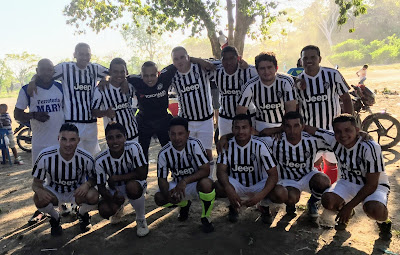Social class in Colombia by comparison and why soccer is manifest in MY Peace Corps experience
I write this as I hydrate for a big soccer game this
afternoon, which marks the first in the round of playoffs: win or be
eliminated. After making it through a full season, I’ve gotten to know my
teammates both on and off the pitch. Still, nobody on my team has my phone
number to inform me of game times, though it never fails that my they pass me
in the street sometime before Sunday to let me know. After repeating the phrase
“If I’m in Talaigua, trust me, I will be at the game” enough times, my
teammates are finally starting to believe me.
Our head coach is a “bicycle-taxi” driver, many players work at the local hardware store (our team sponsor), some operate local mom-and-pop shops scattered around the municipality, and others are day laborers. On my soccer team I am the only gringo, “professor”, or visa holder. In these senses, among others social indicators, I am an outlier.
One’s stratum is well known because it is quite literally
public knowledge, visible on bills and receipts from public services. There’s
no mistaking the fact I live in a strata 2 dwelling, as it is printed on our
utility bill. Class-consciousness is near unavoidable, yet little shame comes
from being of a lower stratum. According to the Federal Research Division of
the Library of Congress’s “Colombia:
a country study”, 89% of the Colombian population occupies the lowest the
lower strata (1,2 and 3), which are the only strata that receive direct public
subsidies/benefits, while strata 5 and 6 pay additional fees (4 is neutral). My
village consists of entirely 1’s & 2’s. It’s common for one to openly
identify as either ‘poor’ or ‘rich’. Such brazen consciousness and clarity opens
the door to direct questions that I receive such as “What do they pay you in
the Peace Corps” and “How much do your soccer shoes cost”, where such questions
would be considered taboo or otherwise distasteful in the U.S. The questions
here are considered neither rude nor invasive, rather, a sincere difference in
customs tied to class identity. Still, at times, I can’t shed my Americanism and
feel apprehensive and awkward when fielding these questions.
I wonder how a simplification and publication of American ‘strata’,
like that of the Colombian socioeconomic strata system, would affect American
social sphere. In other words, how would knowing and acknowledging where we stand in
comparison to others effect our attitudes and behavior? Income inequality has long been a long-standing issue in
Colombia, while in the U.S., its heightened attention is more a recent phenomenon since the
share of middle-incomes began shrinking
since the 70’s and 80’s.
~
On Sundays, on the field, job titles, nationalities, and
other forms of social status are forgotten in pursuit of the universal tell-all
of yelling “Goal” at the top of our lungs. For me soccer has been my favorite
pastime and best great coping mechanism since arriving to Colombia. I am most
acclimated into my community during those 90 minutes. When the match is over, soccer
is common ground for my host country counterparts and I. Recapping what
happened at last Sunday’s match often leads to other opportunities for
relationship building. Truly, more than leading community
entrepreneurship classes or establishing community savings groups, my most
effective way to promote peace and friendship and learn about my community is through soccer.



Comments
Post a Comment